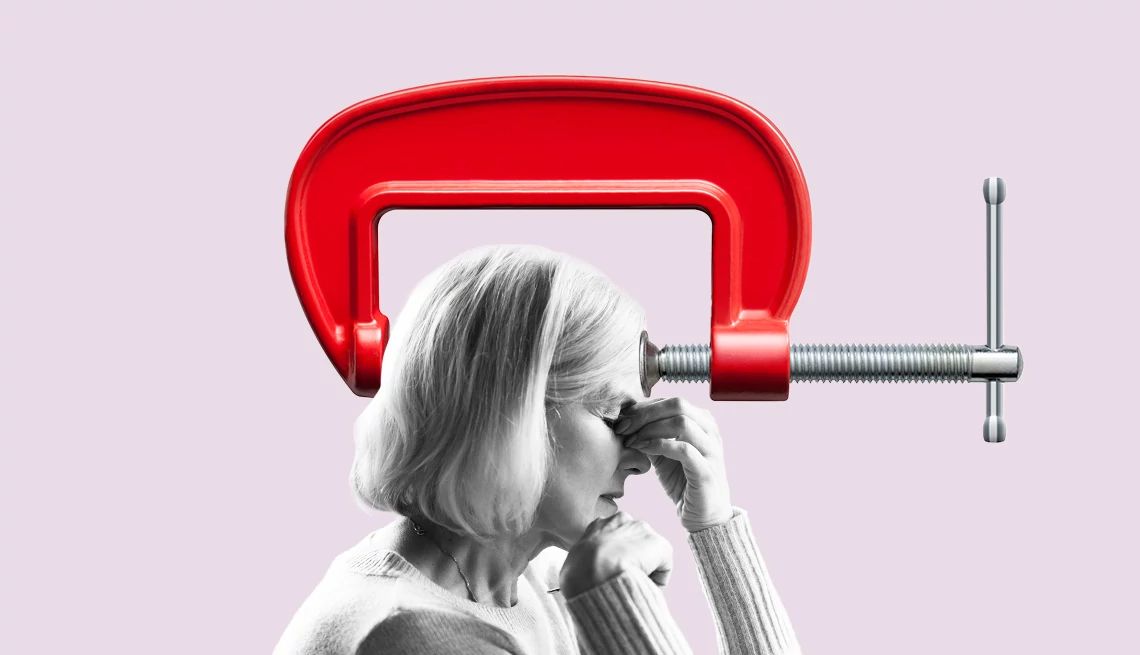AARP Hearing Center


High Blood Pressure Guide
- Symptoms, causes and tests
- Stages and types
- Treatment and prevention
- High blood pressure myths
- Alcohol and blood pressure
- Hypertension headache myths
- Smoking and high blood pressure
- Anxiety, stress and hypertension
- Is hypertension genetic?
- Medications that raise blood pressure
- Home blood pressure monitoring
- Surprising causes of hypertension
Some doctors will tell you that patients often say they know their blood pressure is creeping up because they’ve started getting headaches. Yet most scientific evidence shows the link between high blood pressure and headaches is tenuous, particularly for mild (stage 1) and moderate (stage 2) high blood pressure. And while people suffering from extremely elevated blood pressure could start feeling a sudden and intense pain in their head, along with other serious symptoms, these scenarios are far less common thanks to advances in high blood pressure medication and home monitoring.
According to the American Heart Association (AHA), most people with high blood pressure have no signs or symptoms. Yet the common myth persists, says Paul Whelton, M.D. president, World Hypertension League and professor of global public health at Tulane University School of Public Health and Tropical Medicine. “It’s been around certainly [since] I started practicing as an intern in 1970 and stayed prevalent. It’s not unreasonable to anticipate … that if pressures were high, you would get headaches.”
But in truth, headaches can be due to many different causes that are often difficult to pin down. And the only way to accurately measure your blood pressure is to get it taken at the doctor’s office and to track it yourself with a good quality home blood pressure monitor.
Home blood pressure monitoring is vital
“We are highly encouraging people, especially older people, because hypertension is so prevalent, to have home blood pressure monitors so they can check and see what their blood pressures are on average,” says Beverly Green, M.D., senior investigator for Kaiser Permanente Washington Health Research Institute. Green is a member of the Target: BP Advisory Group, a partnership between the American Medical Association (AMA) and the American Heart Association, and a fellow with the AHA.
The website validatebp.org from the AMA provides a list of devices that have been validated for accuracy and shows a range of price options.
Almost all older adults are going to have an elevated blood pressure under the most recent guidelines. Green says, “It’s great that we’re living longer, and high blood pressure is a natural phenomenon of getting older, but it’s just not very good for us.”
Hypertension: The silent killer
“In general, we used to use the term ‘hypertension, the silent killer,’ because the person could have significant blood pressure elevations that increase the risk for heart attack, strokes or even dying, without the obvious symptoms,” says Keith C. Ferdinand, M.D., the Gerald S. Berenson endowed chair in preventive cardiology and professor of medicine at Tulane University School of Medicine.
Although a typical headache is often unrelated to high blood pressure and ismore often related to anxiety, stress or other conditions, high blood pressure can lead to a sense of heavy headedness along with other symptoms like shortness of breath and having a harder time exercising, Ferdinand adds.
“We don’t consider [headaches] a way of determining whether a person has hypertension because we know that for most people, when the blood pressure is mildly elevated, there are little or no symptoms at all,” Ferdinand says. However, if the patient takes appropriate lifestyle and therapeutic interventions including aerobic exercise, avoiding stress, stopping smoking, losing weight and taking anti-hypertension medication, they will often report that they have less generalized heaviness in their head, as well as less fatigue.
While in general, headaches do not always accompany high blood pressure, there are some emergent situations where a severe headache is one of the symptoms.




































































More From AARP
How to Lower Your Blood Pressure Fast
Eating a teaspoon less salt a day can slash your systolic reading in just a weekBest Exercise for Lowering Blood Pressure
New study finds this is #18 Major Health Risks for People 50 and Older
A look at the top killers — and how to dodge them
Recommended for You